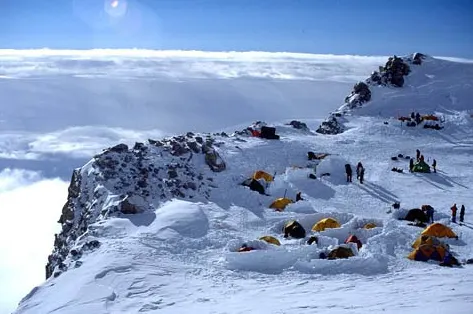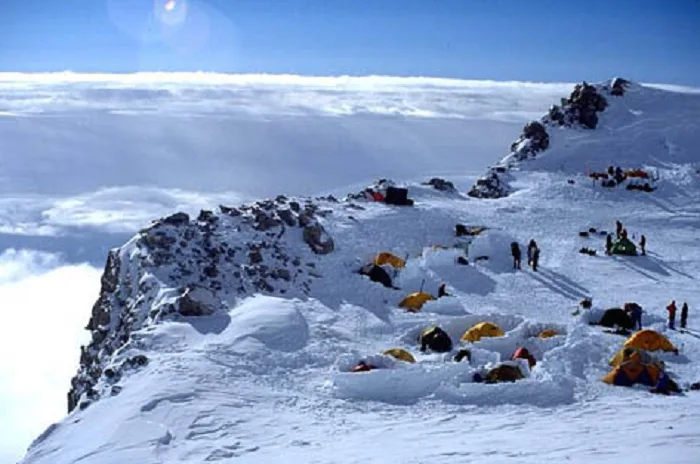
Thawing river of human waste is sliding down Alaska mountain

High camp at 17,200 ft. on Mount Denali (2001). Credit: Wikimedia Commons
Approximately 1,200 hikers venture five hours north of Anchorage, Alaska to travel through routes that feature challenging terrains and glaciers. During the 1970s park rangers created latrines in Kahiltna Galicer that were three to four metres deep and were then covered with plywood at the end of the season.
The warming of the arctic over the past decades have begun to thaw the frozen latrines, which now have the potential to form a massive river of human waste and glacial melt that carries the risk of infecting others with E. Coli and parasites. Park rangers are also concerned of the foul odor that could also occur.
(ICYMI: Dead bodies are turning up on Mount Everest, here's why)
As reported by Mother Nature Network, the amount of glacier cover in Alaskan national parks is larger in size than the area of Rhode Island. The park is implementing new regulations that require hikers to remove their own waste from the property to prevent an increase in accumulated excrement.
Glaciers a few thousand kilometres away are also facing problems with melting ice - dead bodies that were previously frozen on Mount Everest and now appearing. CNN has reported that bodies from British expeditions in the 1970s were recently found, and in 2017 the hand of a dead climber appeared above the ground.
It is estimated that 200 frozen bodies are still on Mount Everest, and some have dubbed it a ‘fecal time bomb’ due to the decades of frozen waste that could potentially liquefy with global warming.











